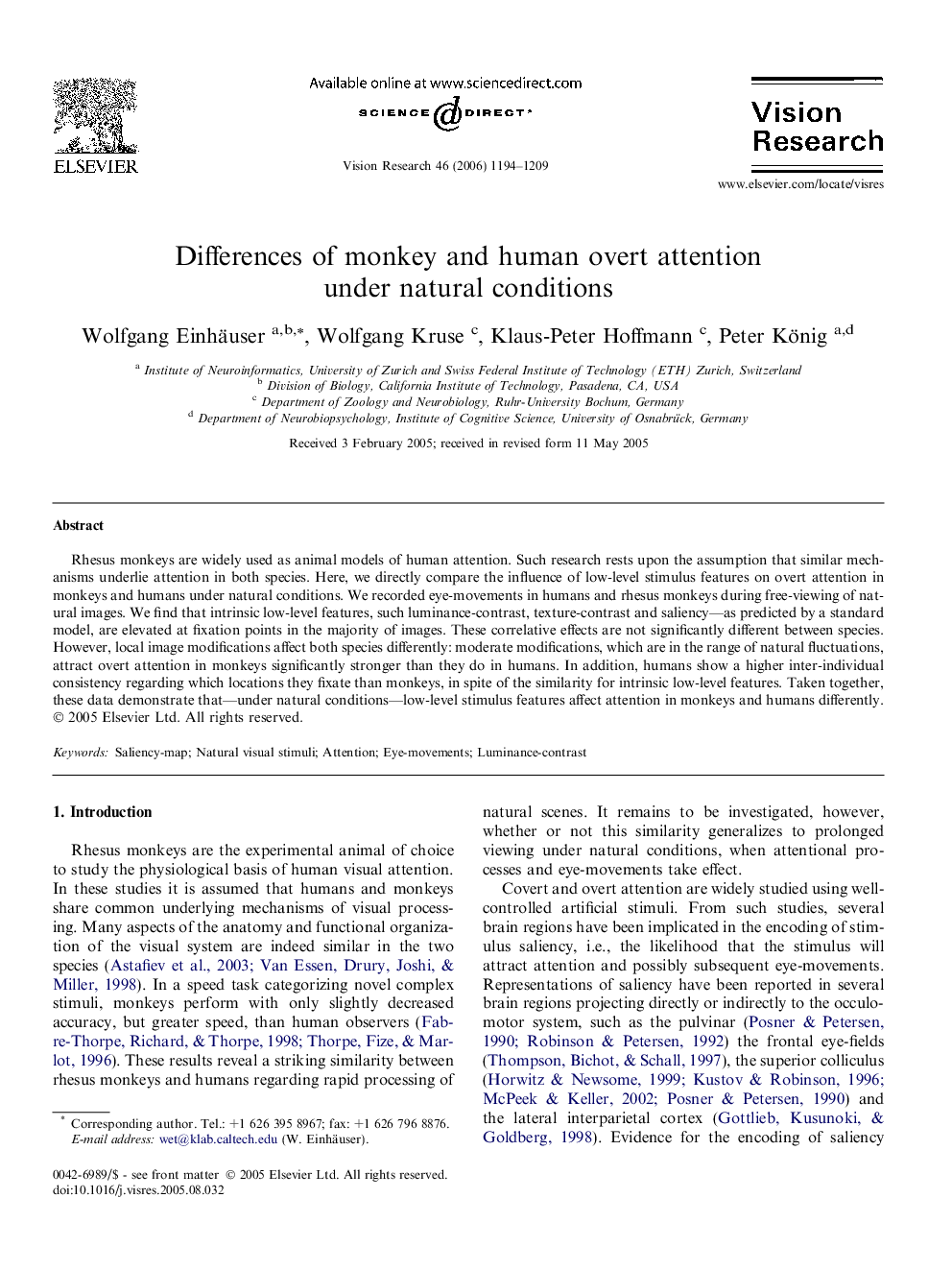| Article ID | Journal | Published Year | Pages | File Type |
|---|---|---|---|---|
| 4035292 | Vision Research | 2006 | 16 Pages |
Rhesus monkeys are widely used as animal models of human attention. Such research rests upon the assumption that similar mechanisms underlie attention in both species. Here, we directly compare the influence of low-level stimulus features on overt attention in monkeys and humans under natural conditions. We recorded eye-movements in humans and rhesus monkeys during free-viewing of natural images. We find that intrinsic low-level features, such luminance-contrast, texture-contrast and saliency—as predicted by a standard model, are elevated at fixation points in the majority of images. These correlative effects are not significantly different between species. However, local image modifications affect both species differently: moderate modifications, which are in the range of natural fluctuations, attract overt attention in monkeys significantly stronger than they do in humans. In addition, humans show a higher inter-individual consistency regarding which locations they fixate than monkeys, in spite of the similarity for intrinsic low-level features. Taken together, these data demonstrate that—under natural conditions—low-level stimulus features affect attention in monkeys and humans differently.
